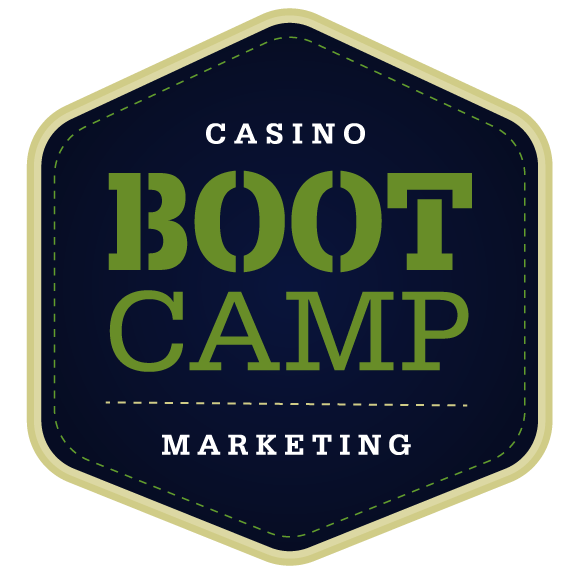Are you a first-time casino marketer overwhelmed by the many available options and strategies? You’re not alone. The world of casino marketing is fast-paced, competitive, and constantly evolving. But with the right knowledge and a well-crafted plan, you can navigate this exciting landscape and achieve remarkable success.
This comprehensive guide will walk you through the essential steps of creating a winning casino marketing plan, even if you’re starting from scratch. We’ll cover everything from defining your target audience and setting clear goals to developing effective strategies and measuring your results. Plus, we’ll share valuable tips specifically for first-time marketers and offer a free downloadable template to simplify the process.
By the end of this post, you’ll have the tools and knowledge you need to create a casino marketing plan that attracts new customers, retains existing ones, and drives revenue growth.
Why a Casino Marketing Plan is Essential for Your Success
Imagine trying to navigate a new city without a map or GPS. You might eventually reach your destination, but you’ll likely take a few wrong turns, waste time and gas, and arrive frustrated. The same principle applies to casino marketing. Without a clear plan, you’ll throw darts in the dark, hoping to hit the bullseye.
A well-crafted casino marketing plan is your compass, guiding you through the complex landscape of customer acquisition, retention, and revenue generation. It’s more than just a document; it’s a strategic framework that empowers you to make informed decisions, allocate resources effectively, and achieve measurable results.
Here’s how a solid plan can transform your marketing efforts and drive your casino’s success:
- Provides Laser-Focused Direction: A well-defined plan acts as your North Star, aligning your entire team towards a common goal. Let’s say your goal is to attract a younger demographic to your casino. Your plan will outline specific strategies, such as social media campaigns targeting millennials, partnering with local influencers, or hosting events that appeal to VIPs. This focus ensures that every marketing dollar is working towards your desired outcome.
- Empowers Data-Driven Decisions: A good plan is rooted in data and insights. You can identify the most effective marketing channels and tactics by analyzing customer demographics, preferences, and behaviors. For instance, if your data reveals that most of your customers are local residents, you might focus on targeted direct mail campaigns to create mid-week residents. Your out-of-market efforts might include extending stays, such as hotel packages. This data-driven approach minimizes guesswork and maximizes your marketing ROI.
- Optimizes Your Marketing Budget: A well-structured plan helps you allocate resources wisely. Let’s say you have a limited budget. Your plan will help you identify the most cost-effective strategies, such as email marketing or content creation while avoiding wasteful spending on less impactful tactics. This ensures that every dollar you invest in marketing works as hard as possible. But what if you have high revenue goals? Then, your plan might concentrate on your most valuable (and reliable) segments.
- Measures Your Success, Not Just Your Efforts: A good plan includes measurable goals and key performance indicators (KPIs) that track your progress. Instead of focusing solely on the number of social media posts you share, you can track concrete results, such as increased website traffic, new customer sign-ups, or revenue generated from specific campaigns. This data-driven approach allows you to evaluate what’s working and what’s not, enabling you to make informed adjustments and continuously improve your marketing performance.
- Uncover Hidden Opportunities & Own Your Niche: A well-researched marketing plan goes beyond surface-level tactics. It delves into understanding the nuances of your local market, identifying underserved segments, and tailoring your offerings accordingly. For example, in a sports town, your plan could focus on game-day promotions, partnerships with local teams, and themed events that capitalize on sports excitement. By aligning your casino with the local sports culture, you’ll attract a passionate and engaged audience eager to celebrate their team’s victories (or commiserate their losses) at your casino. This drives foot traffic and fosters a sense of community and loyalty amongst sports fans. By developing a unique brand identity, crafting compelling messages, and delivering signature customer experiences, you can differentiate your casino from the competition and attract loyal customers who will keep returning for more.
A comprehensive casino marketing plan is not just a nice-to-have; it’s a must-have for achieving sustainable growth and staying ahead of the curve in this dynamic industry.
How to Create a Casino Marketing Plan: A Step-by-Step Guide
Creating your first casino marketing plan might seem daunting, but don’t worry – we’ll break it down into manageable steps.
Step 0: Build a Strong Brand Foundation (or Refine Your Existing One)
Before diving into the specifics of your marketing plan, assessing your casino’s brand foundation is crucial. If you’re a new casino, this step will involve building your brand from the ground up or introducing a brand already existing in another market. However, if your casino has been operating for some time, you likely have existing branding elements in place. In this case, this step is about reviewing and refining your existing brand to ensure it’s still relevant, impactful, and aligned with your target audience.
Here’s how to approach this step:
For New Casinos (or those expanding into new markets):
- Define Your Unique Value Proposition: What makes your casino different? Is it your state-of-the-art facilities, innovative games, celebrity chef-led restaurants, or unique entertainment offerings? Clearly articulate what sets you apart and why customers should choose your casino over others. This value proposition will become the cornerstone of your brand messaging.
- Develop Your Brand Personality: Imagine your casino as a person. What personality traits would they have? Would they be sophisticated and elegant or fun-loving and playful? Defining your brand personality will help you establish a consistent voice and tone in your marketing materials, creating a cohesive brand experience for your customers.
- Create a Visual Identity: Your visual identity is your casino’s face to the world. It encompasses your logo, color palette, typography, and overall aesthetic. Work with a designer to create a visual identity that reflects your brand personality and appeals to your target audience. A strong visual identity will make your casino instantly recognizable and memorable.
- Craft a Compelling Brand Story: Every casino has a story to tell. Share your casino’s history, mission, values, and offerings. A well-crafted brand story evokes emotions, connects with customers on a deeper level, and builds a sense of loyalty and community. Our comprehensive Casino Brand Storytelling Guide can inspire and guide you.
- Map Your Brand Ladder: The Casino Brand Ladder is a powerful tool to visualize and strategize your brand positioning. It helps you define your brand’s current position, desired position, and the steps needed to get there. Download our free Casino Brand Ladder Worksheet to get started.
For Established Casinos:
Brands and markets evolve. So, while you may have been operating under existing brand understanding, a review might unveil opportunities to be more relevant to your current and future audiences.
- Review Your Existing Brand Elements: Critically examine your current logo, tagline, website, marketing materials, and overall brand messaging. Are they still relevant and impactful? Do they accurately reflect your casino’s values and offerings?
- Gather Feedback from Customers and Staff: Conduct surveys or focus groups to get insights from your customers and staff about their perception of your brand. What do they like or dislike? What could be improved?
- Refine Your Brand Positioning: Based on your review and feedback, identify areas where your brand could be strengthened or refined. This might involve updating your logo, revamping your website, or re-evaluating your messaging.
- Revisit Your Brand Story: Has your casino’s story evolved over time? Have you added new amenities or experiences that could be incorporated into your brand narrative? A fresh perspective on your brand story can breathe new life into your marketing efforts.
- Reassess Your Brand Ladder: Use the Casino Brand Ladder to evaluate your current brand positioning and identify opportunities for growth or repositioning.
By taking a proactive approach to brand building (or refinement), you’ll ensure that your casino’s identity is strong, relevant, and compelling. This will lay the groundwork for a successful marketing plan that resonates with your target audience and drives lasting results.
Step 1: Define Your Target Audience
In the world of casino marketing, one size doesn’t fit all. To create a winning strategy, you need a deep understanding of your ideal customers – their preferences, motivations, and behaviors. This is where defining your target audience comes into play.
Think of your target audience as the heart of your marketing plan. By pinpointing the specific groups of people you want to attract, you can tailor your messages, promotions, and experiences to resonate with them personally. This targeted approach improves your marketing effectiveness and optimizes your budget by focusing on the most promising segments.
Here’s a breakdown of how to define your target audience:
- Partner with Your Database Manager: Your casino’s database is a goldmine of valuable information about your existing customers. Collaborate with your database manager to analyze demographics (age, gender, income), visitation patterns (frequency, time of day, length of stay), spending habits (average bet, game preferences), and any other relevant data. This will help you create a detailed profile of your current customer base, revealing key insights into your most valuable customers.
- Identify High-Value Segments: Once you have a clear picture of your existing customers, you can start to identify high-value segments. These customers generate the most revenue for your casino, exhibit strong loyalty, and have the potential for even greater value. You can maximize your ROI and drive sustainable growth by focusing your marketing efforts on these segments.
- Conduct Market Research with Experienced Researchers: Partnering with experienced market researchers can provide valuable insights into broader market trends, competitor analysis, and emerging opportunities. Their expertise can help uncover untapped segments and refine your target audience definition. Additionally, a neutral perspective can help you avoid biases and make more objective decisions.
- Engage in One-on-One Conversations: While data analysis is crucial, nothing beats the power of direct conversations with your most valuable guests. Set up one-on-one interviews or focus groups to gather qualitative insights into their references, motivations, and pain points. Ask open-ended questions to encourage them to share their experiences and opinions. These conversations can unearth a treasure trove of information you won’t find in any data set.
Combining data analysis with direct customer feedback will give you a comprehensive understanding of your target audience. This knowledge will empower you to create highly targeted marketing campaigns that resonate with your ideal customers, driving them to choose your casino as their preferred entertainment destination.
Step 2: Set Clear, Measurable Goals That Drive Business Growth
Now that you understand your target audience, it’s time to set goals for your marketing efforts. These goals are the guiding stars that will direct your strategy and measure your success.
However, before you start brainstorming ambitious targets, aligning your marketing goals with the overarching business objectives set by your casino’s leadership is crucial. What are the executive expectations for revenue growth, customer acquisition, and market share? What key performance indicators (KPIs) are they tracking?
Once you have a firm grasp of these top-level goals, you can start to break them down into smaller, more manageable targets for your marketing team. Here’s how to approach this process, considering your specific customer segments:
- Understand the Big Picture: Work closely with your executive team to understand the casino’s financial goals. What are the revenue targets for the next quarter, year, or even five years? How do you expect each customer segment to contribute to achieving these targets? By aligning your marketing goals with the overall business strategy and understanding each segment’s contribution, you’ll ensure that your efforts are strategically important for the casino’s success.
- Break Down Revenue Goals by Segment: Once you understand the big picture, break down the revenue targets into smaller, more manageable goals for each customer segment. Consider the unique characteristics and spending patterns of each group:
- Hosted Players: Maximize their lifetime value through personalized experiences, exclusive offers, and high-touch service.
- High-Frequency, High-Worth Guests: Incentivize continued loyalty through tailored rewards, special events, and personalized communication.
- Mid-Worth Customers: Encourage increased frequency and spending through targeted promotions, engaging events, and loyalty program benefits.
- Low-Worth Customers: Develop strategies to nudge them towards higher spending tiers through gamification, personalized offers, and compelling incentives.
- Retail Un-Carded Guests: Entice them to join your loyalty program and increase their engagement through attractive sign-up bonuses, personalized offers based on observed behaviors, and highlighting membership benefits.
- Make it SMART: As you define your goals for each segment, ensure they are SMART:
- Specific: Clearly define what you want to achieve for each segment (e.g., increase average spend per visit for Mid-Worth Customers by 10%).
- Measurable: Use quantifiable metrics to track progress (e.g., number of loyalty program sign-ups, redemption rates for promotional offers).
- Achievable: Set realistic goals for each segment based on your budget, resources, and historical data.
- Relevant: Ensure your goals align with each customer segment’s specific needs and preferences.
- Time-Bound: Set a deadline for achieving each goal (e.g., within the next quarter, by the end of the year).
Setting SMART goals tailored to each customer segment will create a clear and targeted roadmap for your marketing team. This will not only guide your strategy but also provide a benchmark for measuring the success of your campaigns and demonstrating the value of your marketing efforts to the executive team.
Remember, your casino marketing plan is a living document. As market conditions change and new opportunities arise, don’t hesitate to revisit and adjust your goals to ensure they remain relevant and aligned with your evolving business needs.
Step 3: Develop Your Casino Marketing Strategies: A Multi-Pronged Approach
With your target audience and goals clearly defined, it’s time to craft a strategic marketing plan that resonates with each customer segment and drives desired outcomes. Remember, a successful casino marketing strategy isn’t a one-size-fits-all approach. It involves a multi-pronged approach that caters to each segment’s unique preferences and behaviors.
However, before diving into specific tactics, it’s crucial to understand the key drivers for each customer segment and how much revenue you expect to generate from each one. This will help you prioritize your marketing efforts and allocate your budget effectively.
Consider these questions:
- What motivates your Hosted Players to visit your casino? Is it the exclusive events, personalized service, or high-stakes gaming?
- What incentives resonate most with your High-Frequency, High-Worth Guests? Are they seeking luxurious rewards, special recognition, or personalized experiences?
- What drives Mid-Worth Customers to return regularly? Are they drawn to promotions, entertainment options, or the chance to earn rewards?
- How can you encourage Low-Worth customers to increase their spending? Would personalized offers, gamification elements, or special events be effective?
- What can you do to attract Retail Un-Carded Guests and convert them into loyalty members? Are they looking for specific types of promotions, entertainment options, or a sense of community?
By understanding the drivers for each segment and estimating their potential revenue contribution, you can develop a monthly marketing plan that utilizes a multi-pronged approach. This plan will strategically combine various marketing tactics to target each segment effectively, maximizing your overall ROI and ensuring sustainable growth for your casino.
Here’s a breakdown of key strategies to consider:
- Hosted Events (Hosted and High-Worth Guests):
- Exclusive Experiences: Curate VIP events that offer unique experiences like private concerts, celebrity chef dinners, or exclusive gaming tournaments.
- Personalized Invitations: Make your hosted and high-worth guests feel valued with personalized invitations that highlight their status and offer exclusive perks.
- High-Touch Service: Ensure a dedicated host is available to cater to their every need, from booking reservations to arranging transportation.
- Tailored Rewards: Offer exclusive rewards like luxury gifts, travel packages, or access to exclusive events.
- Promotions and Giveaways (All Segments, but Key Drivers for Mid and Low-Worth):
- Tiered Promotions: Design promotions that appeal to different segments. Offer high-value rewards for high-worth guests and more frequent, lower-value promotions for mid and low-worth guests.
- Slot Tournaments: Host slot tournaments with attractive prize pools to incentivize play and create a sense of competition.
- Table Game Promotions: Offer special bonuses or discounts on table games to attract players and increase betting activity.
- Themed Giveaways: To generate buzz and attract a wider audience, organize giveaways with exciting prizes like cars, vacations, or electronics.

- Database Marketing and Reinvestment (All Segments):
- Direct Mail: Send personalized offers, event invitations, and newsletters via direct mail to stay top-of-mind with your customers.
- Email Marketing: Develop targeted email campaigns with relevant content, promotions, and event announcements to nurture leads and drive conversions.
- Text Messaging: Use SMS marketing to send your opted-in customers time-sensitive offers, reminders, and updates.
- Retail Engagement (Retail Un-Carded Guests & All Segments):
- Advertising: Utilize print, radio, TV, and digital advertising to reach a broad audience and raise awareness of your casino’s offerings.
- Social Media: Engage with potential and existing customers on social media platforms, share enticing content, and run targeted ad campaigns.
- Billboards and Signage: Strategically place billboards and signage in high-traffic areas to capture the attention of potential customers.
- Community Events: Participate in local events and sponsor community initiatives to build goodwill and establish your casino as a local partner.
- Loyalty Program (All Segments):
- Tiered Rewards: Design a loyalty program with multiple tiers to incentivize continued play and reward high-value customers.
- Points-Based System: Award points for various activities like gaming, dining, and hotel stays, allowing customers to redeem them for rewards.
- Exclusive Benefits: Offer exclusive benefits like priority service, VIP events, and personalized offers to high-tier loyalty members.
- Gamification: Incorporate gamification elements like challenges, badges, and leaderboards to enhance engagement and encourage repeat visits.
By strategically combining these marketing strategies, you can create a comprehensive plan that caters to each customer segment’s unique needs and preferences. This targeted approach will maximize your marketing ROI, foster long-term customer loyalty, and drive sustainable growth for your casino.
Step 4: Allocate Your Budget Strategically
No marketing plan is complete without a budget. The amount you can invest in marketing hinges on several factors, including your casino’s size, revenue, and target market. However, to maximize the impact of your marketing efforts, it’s crucial to align your budget allocation with the specific strategies outlined in Step 3.
- Personalization for High-worth customers:
- Budget: Allocate a significant portion of your budget to personalized marketing for high-worth customers.
- This segment represents a substantial source of revenue, justifying a higher investment.
- Allocation: This budget should cover:
- Data Analysis & CRM: Invest in robust customer relationship management (CRM) tools and data analysis to deeply identify and understand your high-roller segment.
- Exclusive Experiences: Budget for unique events, tailored promotions, and VIP services catering to high-worth customers’ specific preferences.
- Personalized Communication: Allocate funds for direct mail, email campaigns, and dedicated hosts to communicate directly and build relationships with high-worth customers.
- Targeted Campaigns for Casual Players:
- Budget: Allocate a moderate portion of your budget to targeted campaigns for casual players.
- While individual spending may be lower, this segment represents a larger volume of customers.
- Allocation: This budget should cover:
- Digital Advertising: Invest in targeted online advertising campaigns (social media, search engine marketing) to reach casual players with relevant offers and promotions.
- Loyalty Programs: Allocate funds to develop and maintain engaging loyalty programs that reward casual players for their continued patronage.
- Gamification: Budget for incorporating gamification elements into your casino experience (e.g., challenges, rewards) to keep casual players entertained and coming back for more.
- Content Marketing & SEO:
- Budget: Allocate a smaller yet consistent portion of your budget to content marketing and SEO.
- These efforts yield long-term benefits in terms of organic traffic and brand awareness.
- Allocation: This budget should cover:
- Content Creation: Create high-quality blog posts, articles, videos, and social media content that attracts and engages your target audience.
- SEO Optimization: Allocate funds for SEO specialists or tools to ensure your website and content rank well in search engine results for relevant keywords.
- Distribution & Promotion: Budget for promoting your content across various channels to reach a wider audience.
- Additional Considerations:
- Measurement & Tracking: Allocate a portion of your budget to track and measure the performance of your marketing campaigns. This allows you to optimize strategies and identify what’s working best.
- Contingency Fund: Keep a small reserve for unexpected opportunities or challenges that may arise throughout the year.
Remember, this is a suggested framework. Your specific budget allocation will depend on your unique circumstances and goals. The key is to ensure your budget aligns with your marketing strategies and prioritizes the tactics most likely to drive revenue and growth for your casino.
Step 5: Measure, Track, and Analyze for Continuous Improvement
The success of your marketing plan doesn’t end with implementation. It’s essential to continuously measure, track, and analyze the performance of your campaigns to understand what’s working, what’s not, and how you can improve. Here’s a framework for comprehensive measurement and analysis:
- Revenue Tracking & ROI Analysis:
- Key Metrics: Track overall revenue generated by each marketing segment (high-worth customers, casual players). Calculate each campaign or strategy’s return on investment (ROI) to determine its effectiveness.
- Tools: Utilize casino management software, CRM systems, and marketing analytics platforms to accurately gather and analyze revenue data.
- Behavioral Analysis:
- Visitor Behavior: Track the number of visitors, average visit duration, and frequency of visits for each segment. Analyze how these metrics change over time and in response to specific marketing initiatives.
- Spending Patterns: Monitor average spending per visit, betting patterns, and game preferences for each segment. Look for trends or correlations with specific events or promotions.
- Engagement Metrics: Track loyalty program participation, redemption rates, and engagement with gamification elements. Analyze how these metrics relate to customer retention and lifetime value.
- Tools: Use website analytics, player tracking systems, and customer surveys to gather behavioral data and gain insights into customer preferences.
- External Factor Analysis:
- Environmental Factors: Track weather patterns, local events, and seasonal trends that may influence casino visits and spending.
- Competitive Landscape: Monitor competitor promotions, events, and pricing to understand your market position and identify opportunities for differentiation.
- Operational Factors: Consider internal factors such as staffing levels, technology issues, or renovations that may impact the customer experience and revenue generation.
- Reporting & Actionable Insights:
- Regular Reporting: Establish a regular reporting cadence (weekly, monthly, quarterly) to review performance data and identify trends.
- Actionable Insights: Translate data into actionable insights. Use the information gathered to adjust your marketing strategies, optimize campaigns, and personalize offers for specific segments.
Example Questions to Guide Your Analysis:
- Did the personalized VIP event increase visits and spending from that segment?
- Are casual players responding better to certain types of promotions or games?
- How did a recent weather event impact casino attendance and revenue?
- Is a competitor’s new loyalty program affecting your customer base?
- Are there any operational issues that must be addressed to improve the customer experience and revenue potential?
You can gain valuable insights into your customers’ behavior and preferences by consistently measuring, tracking, and analyzing these factors. This knowledge empowers you to refine your marketing strategies, maximize your return on investment, and create a more engaging and profitable casino experience for all your guests.
Essential Tips for First-Time Casino Marketers
Navigating the world of casino marketing for the first time can be a challenge, but these essential tips will help you get started on the right foot:
- Understand the Regulatory Landscape: Familiarize yourself with your jurisdiction’s legal and regulatory requirements. Compliance is crucial in the gaming industry.
- Build a Strong Brand Identity: Develop a unique brand personality that resonates with your target audience. This will help you differentiate your casino from the competition and attract loyal customers.
- Utilize Social Media Marketing: Social media platforms like Facebook, Instagram, and Twitter are powerful tools for connecting with potential customers, sharing promotions, and building brand awareness.
- Leverage Email Marketing: Email marketing is a cost-effective way to nurture leads, announce promotions, and stay top-of-mind with your customers.
- Offer Compelling Promotions: Design attractive promotions that appeal to your target audience. Consider offering welcome bonuses, free spins, cashback rewards, or other incentives.
- Partner with Local Businesses: Collaborating with other businesses in your community can help you expand your reach and attract new customers.
- Focus on Customer Experience: Providing exceptional customer service is crucial for building loyalty and positive word-of-mouth. Train your staff to deliver a memorable experience for every guest.
Common Mistakes to Avoid in Casino Marketing
Overlooking Your Target Audience: Not clearly defining your target audience can lead to ineffective marketing campaigns that don’t resonate with the right people.
Setting Unrealistic Goals: Setting overly ambitious goals can lead to disappointment and discouragement. Start with achievable goals and gradually increase them as you gain traction.
Spreading Your Budget Too Thin: Trying to do too much with a limited budget can result in ineffective campaigns across multiple channels. Focus on the strategies that are most likely to yield the highest ROI.
Ignoring Online Marketing: In today’s digital age, online marketing is essential for reaching a wider audience and engaging with potential customers.
Failing to Track Results: Without tracking your marketing efforts, you won’t know what’s working and what’s not. This makes it difficult to optimize your strategy and improve your results.
Not Adapting to Industry Trends: The casino industry is constantly evolving. It’s important to stay up-to-date on the latest trends and adapt your marketing strategies accordingly.
Creating a successful casino marketing plan requires careful planning, strategic thinking, and a willingness to adapt. By following the steps outlined in this guide, you’ll be well on your way to developing a winning strategy that attracts new customers, retains existing ones, and drives revenue growth.
But remember, a casino marketing plan is not a one-time project; it’s an ongoing process. Regularly review and update your plan to ensure it remains relevant and effective in the ever-changing gaming landscape.
Download our free casino marketing plan template to get started, and sign up for our newsletter to receive exclusive tips, insights, and industry updates. Take the first step towards casino marketing success today!




Recent Comments